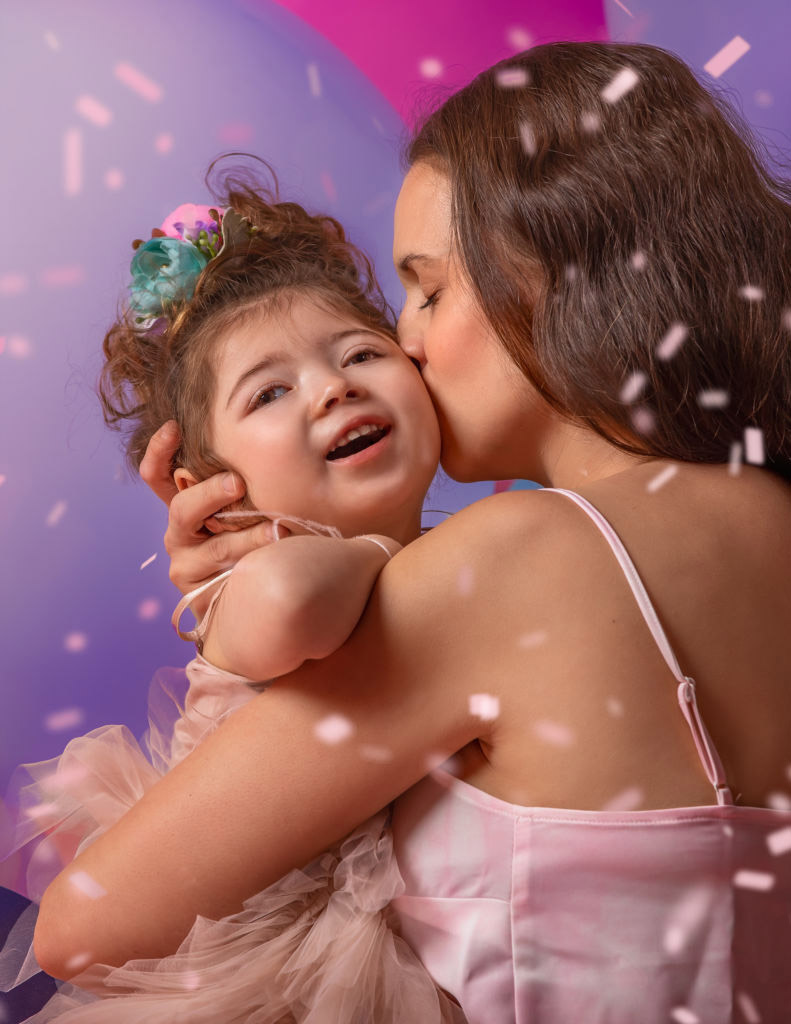This is a guest post by Allison A. Thomas of Allison A. Thomas Photography for World Down Syndrome Day, March 21st.
Happy World Down Syndrome Day!

I would love to start off by sharing a touching message that was originally shared with me by a wonderful mother named Erica. Her son Aiden is one of the many adorable clients that I have had the pleasure of working with in my time as a professional photographer. Aiden also happens to have Down syndrome.
“The four leaf clover is considered to be a rare variation of the common three leaf clover. No one is sure how or why the extra leaf develops when all other biological and environmental conditions are the same. Four leaf clovers are considered to be good luck and are cherished by all who possess them. Down Syndrome occurs in much the same way. No one knows why some babies are born with an extra chromosome, but those of us that are fortunate to have them in our lives consider it a gift….we are the lucky few. Our ‘clovers’ are not worth more or less than standard ones- they are merely different. My hope is that one day differences will be cherished and celebrated as much as the four leaf clover,” writes Kristina Johnson.
Aiden was blessed with Trisomy 21, also known as Down syndrome. He is eleven years old and in the fifth grade. Aiden was adopted from foster care and loves his family so much. He enjoys watching movies and many different sports, but most of all he really enjoys playing baseball and kickball. His favorite subject in school is science-the experiments are the best! He loves spending time with his family and their puppy Dixie. When Aiden grows up, he wants to be a country rock star. Most of all, he loves to smile, has a big heart and a huge personality!

It took me quite a while to make the decision to go for it and start my business. I now run my own business, and I have been so blessed to be able to photograph many children like Aiden during the last couple years.
The first assignment that I took on was a large one. I was asked to photograph the DC Walk for Apraxia. I was so nervous. I can’t lie about that. However, that nervousness went away fairly quickly as I got into my zone and started watching everything going on around me.
The DC Walk for Apraxia was magical. It was fascinating to watch all the families come together to celebrate these children and their accomplishments. Seeing the children receive their medals on stage in front of a large crowd and witnessing the pride beaming on their faces was adorable. I was honored to be a part of the moment, and I instantly became addicted to photographing the families. I realized that I have a talent, and that I have the means to help others through my talent.
I started my career as a family photographer. I also wanted to continue offering my services to families who needed a skilled photographer who would understand their children. Many of these children required a photographer who possessed an extra set of skills. I spent a lot of time prior to becoming a photographer in occupational, physical and speech therapy rooms for my own children. Because of this, I was able to meet many astonishing parents and share conversations with them. Our children shared memories and I made some long-lasting friendships with these parents. It was a blessing to be able to hear their stories, struggles and worries. Not only did it help me as a mother at that time, but it also helped me to become the photographer I would one day become.
After photographing the DC Walk for Apraxia, I was able to start sponsoring various children for the Wish Project for Child Couture Magazine. My goal while sponsoring these projects was to host a shoot for each child that simply made them feel amazing and captured their joy.

I start planning each shoot by asking their parents what their child loves most. Is it a special toy? Is it a hobby such as dancing? Is it a special character? It is very important to find out what each child loves. I also ask what the child does not like. Often, I have to note if my strobe flash will be an issue. For children with sensory sensitivities or epilepsy, this is an important question to ask. It is important to try to see the world through their eyes as much as possible to avoid adding any upset to the photography session. Simply asking parents these questions offers helpful guidance before the shoot.
Once I have asked these important questions, I start styling the shoot with the help of parents and any designers I can get on board. Most people are extremely generous and eager to donate and help. The absolute kindness of strangers is unbelievable. It is beautiful to witness.
During the sessions, I ask about any preferences for medical equipment and posing. Some children prefer to have their adaptive equipment in photos and some do not. If they do not, I try my best to accommodate them (be that with editing or posing). It is also important to ask parents what they love about their child most. All parents know their children so well. Many parents want images of that one special glance or the look that their child gives them all the time. I ask them what I can do to help. I make sure to ask them what they would like for me to capture, and if there are any situations that elicit such a response from their child. For example, one of my clients loved to play “drop the baby” and when her mommy gently swung her she let out the biggest heart-warming smile. I find that parents cherish the smallest moments and I like to capture that.

Mostly, I love these sessions because I get to participate in something so special. At the end of the day, I know that I have made a difference and I cannot even begin to describe how much these children have made a difference for me. One of my favorite emotions to capture is love, and the love that I capture in these sessions is so strong and beautiful that there is no way to put it into words. Only a photograph can do that, something I have the ability to permanently capture for families.
Wow, this is awesome photography, Thanks